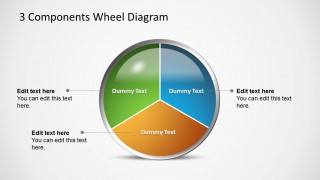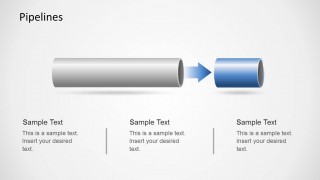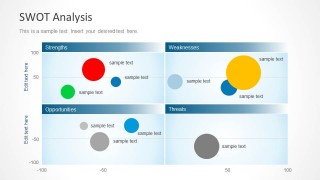Learn more how to embed presentation in WordPress
Copy and paste the code below into your blog post or website
Copy URL
Embed into WordPress (learn more)
Comments
comments powered by DisqusPresentation Slides & Transcript
Presentation Slides & Transcript
Print Timeline
Printing methods through the ages.
Woodblock Printing
History
Woodblock printing originated in China as a method of printing on textiles and later on paper. It was used to create patterns, simple images and text widely throughout East Asia.
Nowadays, the method is used mainly for artistic purposes.
Uses movable components to reproduce the elements of a document.
Movable Type
History
The first movable-type system for printing was created around 1040 AD by Bi Sheng in China. This used ceramic materials for he type. The first metal movable-type system for printing was created around 1230 in Korea.
The first movable type system for Europe was invented by Johannes Gutenburg in Germany. It was called the printing press.
The image is incised into a surface. The sunken area holds ink. Direct opposite of a relief print.
Intaglio
History
Intaglio engraving was invented in Germany by the 1430s. Engraving had been used by goldsmiths to decorate metalwork and also a method of rubbing an alloy into the lines to make a contrasting colour. It’s thought that goldsmiths began to print impressions of their work to record the design. The printmaking developed from that.
Martin Schongauer was one of the earliest known artists to use copper-engraving technique.
A device for evenly printing ink onto a print medium.
Printing Press
History
German inventor, Johannes Gutenberg, invented a printing press process which allowed the mass production of printed books. It remained the principal means of printing until the late 20th century.
A method of printing using stone or a metal plate.
Lithography
History
It was invented in 1796 by German, Alois Senefelder for publishing theatrical works cheaply.
Today, lithography is still used to print newspapers, posters, maps any many other smooth thing that needs to be mass produced cheaply.
Lithography with colour!
Chromolithography
History
The inventor of lithography, Alois Senefelder, introduced the cocept of colour lithography in his book on lithography in 1818. In 1837, Godefroy Engelmann in France was awarded a patent on chromolithography. It was suggested that it had been in use before this.
A printing press where the images to be printed are around a cylinder.
Rotary Press
History
Rotary drum printing was invented by Richard March Hoe in 1843.
A modern version of letterpress. Can be used on most substrates.
Flexography
History
The first patented flexo press was built in Liverpool by Bibby Baron & Sons. It did not work correctly with the water-based ink smearing. The device became known as “Bibby’s Folly”.
In the early 1900s, other presses developed using rubber plates and aniline oil-based ink.
In the early 20th century, this aniline printing was used extensively in the United States in food packaging before it was temporarily classified as unsafe.
It was later renamed flexography to shake off negative association.
A cheap press that forces ink through a stencil onto paper.
Mimeograph
History
Thomas Edison received patent for “autographic printing” in 1870 for the electric pen used for making the stencil and the flatbed duplicating press. He got another patent for “method of printing” which was for the making of the stencils using a grooved metal plate which punctured stencil when pressed down by a blunt metal stylus.
“Mimeograph” was originally a trademark but the term has become genericized over time.
Offset Press
History
The first offset lithography press was created in England and a patent was granted to Robert Barcley in 1875. He combined mid-19th century transfer printing technologies and the 1843 rotary printing press, using a metal cylinder instead of flat limestone.
Today, offset litho is one of the most common ways of creating prints. It is commonly used in the printing of newspapers, books, magazins, brochures.
A computer printer that prints with heat to transfer dye onto medium materials.
Dye-Sublimation Printer
History
Phototypesetting
History
This print method could be used in offices where other typographic printing methods could not. It grew rapidly in the 1960s. The phototypesetter was developed to run faster, project onto monitors, and to perform various different functions. The PC and desktop publishing software rendered phototypesetting obsolete.
Makes paper copies of visual images quickly and cheaply.
Photocopier
History
From the 1960s through the 1980s, Savin Corporation developed and sold a line of liquid-toner copiers which used a technology based on patents they owned. These were xerographic.
Can transfer a 2-D image onto a 3-d object.
Pad Printing
History
Whilst crude forms of pad printing have been around for centuries, the suitable technology of of the twentieth century enabled the process to become widespread. It was used in the watch-making industry after WW2. The 60s and 70s brought developments such as silicone pads and more advanced equipment making the method much more practical.
Rapidly produces high quality graphics on plain paper.
Laser Printing
History
Invented by Gary Starkweather in 1969. The prototype was created by modifying an existing xerographic copier. The first commercially available digital printer was the IBM 3800 in 1976. The first intended for the mass market was the HP LaserJet 8ppm. Released in 1984, it was to sell to owners of personal computers.
Computer printing by impact. Text and graphics are made up of dots.
Dot Matrix Printing
History
Was introduced in 1970 as the LA30. This was followed by the LA36 in 1974. It achieved greater commercial success. The introduction of digital to dot matrix printing broadened the variety of the printers.
Creates digital image by propelling droplets of ink onto paper.
Inkjet Printing
History
Though the concept originated in the 19th century and was extensively developed in the early 1950s, the late 1970s brought inkjet printers that could reproduce digital images from computers. Today, they’re the most commonly used type of printer.
Makes 3D solid objects from a digital model.
3D Printing
History
Early 3D printers in the 1980s were large, expensive and very limited in what they could actually produce.
Selective Laser Sintering was developed in the mid-1980s.
Stereolithography was patented in 1987.
Digital Press
History







